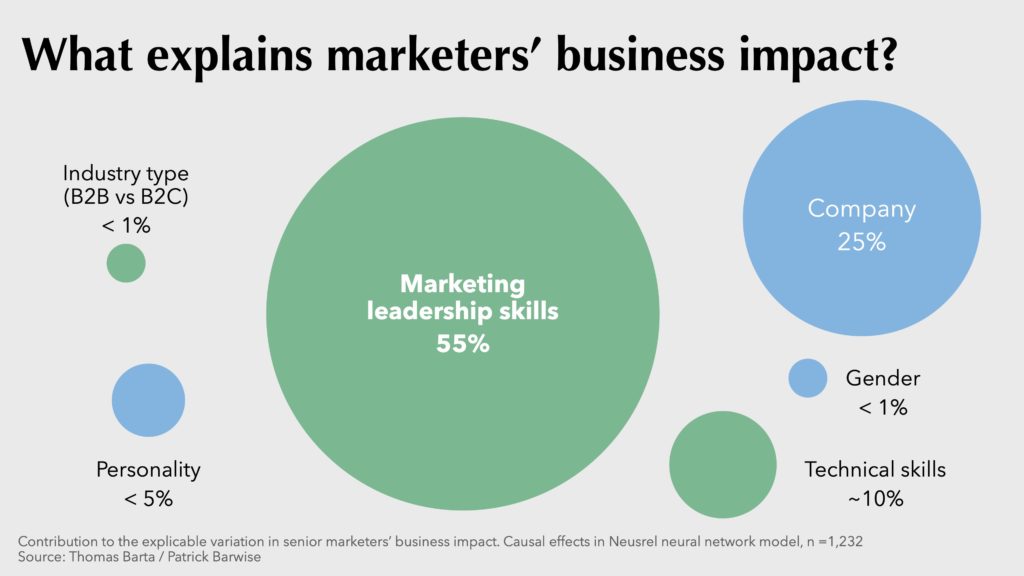Better Marketing
Seven Steps To Better Marketing – Part 2
For those of you who missed the first part of this article, here’s a quick recap:
We defined the three essential prerequisites for ‘Better Marketing’ as: hire an experienced strategic marketing brain, bring them into the leadership team of your business and give them scope to align marketing and brand strategies with the overall business goals.
That was Part 1, the first three steps to better marketing, and you can read it all here.
Now we’re going to cover the final four steps required to get your business firing on all cylinders. And fulfil your glorious destiny!
Steps To Better Marketing; Steps 4 To 7
4. Internal Alignment
Sales & Marketing are two sides of the same coin, and when they get along famously, you’ll know all about it. Unfortunately, the same is true when they’re not coordinating well. In some organisations, you can even sense the disdain between functions, and to be honest, if that’s the case, there are bigger problems than just getting your marketing to run more effectively.
The kind of issues that can arise include differing expectations of lead flow volumes; marketing attracting the wrong kind of leads and blaming poor close rates on sales; sales not closing or nurturing effectively and blaming it on marketing. Or, of course a few bad actors in crucial positions can affect everyone.
So the first thing to say is you need to identify the problem and then bring the parties together to solve it – of course, that’s a leadership task.
Now let’s assume you don’t have an active problem and talk about creating the right conditions to get sales and marketing working together as closely as possible.
If you have traditional business development executives, send your marketing people out
on sales calls with them now and again. The insight to be gained when talking to a customer face-to-face is invaluable, and simply can’t be achieved any other way. If your customer resells your product on to end users, get both sales AND marketing to talk to some of them. Regularly!
As an outsider to the situation, a switched-on marketing exec may see ways to help sales that they wouldn’t have thought of themselves. And by putting the two ‘in the trenches’ together, you’re kick starting the process of mutual respect and coordinated effort.
If you don’t have that sort of sales function, then you can always develop cross functional teams to tackle tricky problems. Different perspectives, fresh eyes and an open attitude (that needs to come from you as the leader) can result in solution that nobody would have reached on their own. And once you solve a problem or two, together, the respect will grow, and the problems will go.
It’s all about creating a sales AND marketing spirit, rather than sales VERSUS marketing.
5. Access To The Right Professional Services
Let’s assume you don’t have the budget to hire as many marketing people as you like. Or any! And, even if you did – there are limits to what even the best marketing people can do.
So now in your pursuit of Better Marketing, you need to decide what can be outsourced and to whom – be it a consultant, agency or specialist freelancer – and what you really need to do in-house. To a degree, this is going to depend on the skillsets of your people, of course.
But please don’t fall into the trap of thinking anybody can fudge their way through marketing, that Google etc make it easy to DIY, you have a youngster in the office who knows a bit about social media, and you can find a couple of external specialists to do things like SEM (Search Engine Marketing aka Adwords) and SEO (Search Engine Optimisation i.e. getting found in Google searches).
First, while anybody with a bit of patience can use the basic Google, and social tools, to do it well and profitably it’s harder than it appears. There are so many specialities in marketing, that you’ll never find someone who excels in everything. So if you need to keep SEO skills in the business, then hire for that, and you might find yourself outsourcing copywriting & design, for example.

But that’s only half the issue. The other essential is strategic leadership. Better Marketing needs all the individual skillsets, activities and channels to be working together in harmony. And that means experienced coordination. And each of those specialists should be quality controlled and performance managed. Most will provide reporting and data, but it takes real skill to be able to meaningfully read it and understand how to act on it. They won’t tell you this because it makes their job more challenging!
If you’ve hired the right marketing leader, they’re going to take care of all this for you, but if you’ve hired someone less experienced, you will run into issues. Here are two problems to look out for.
Marketing Trying To Do Everything Themselves
This may actually seem essential to begin with, because you’ve spent money on the person now sitting in the seat! But for reasons explained above, you’re still going to need outsourced marketing specialists.
If your new recruit is keen to please and budgets are tight, they may be reluctant to do so. If you don’t provide the budget to let them allocate work out – then your results are going to plateau. And your marketing star/s may even become discouraged, and leave.
So the advice here is to invest in marketing as much as finances allow to support your new person, and don’t immediately divert the increased funds to other parts of the business. Don’t put the emphasis on reducing budget, put it on building ROI!
And if you need some advice on how much your marketing budget should be, you can read all about it here.
Marketing Outsourcing Everything
This is the opposite end of the scale, and actually, not really a problem so long as you have the budget to pay for it all, and the ability to keep it coordinated from a central point.
Marketing rushing to market!
OK, we know, you need leads to feed your additional costs. But please be patient. A good marketing person needs to analyse the situation before fixing it. And it maybe they need to address some fundamental underlying issues – like brand, website, lead and sales data collection, effective use of the CRM – before overhauling, say, your Google activities.
Anyway, if you’ve hired an experienced marketer, you’re probably not going to run into any of these issues. But at least now you know what to look out for.
6. The Right Data
Depending on your business, this doesn’t necessarily have to be complicated. All we’re talking about is, quite simply, knowing what’s going on with your marketing, and the effect it has on your business. Preferably right down to an individual activity basis. In marketing, we call this attribution.
At its simplest, if you put an ad in a trade journal that gets 50 enquiries, that turn into 10 leads resulting in five sales that bring in revenue equivalent to 30 times the cost of the ad, then that’s solid ROI data.
Now consider: how quickly do those sales need to accrue to be counted? What about those who saw the ad, took note and came into the sales funnel 6 months later? What about the ones who bought an additional four products after that first sale. What about those who enquired but didn’t buy this time, but you added them to your database and kept in touch for two years until they finally bought? What about the ones who referred you to their colleagues or friends. How do you capture that data?
Then there’s what you do with the data insights. Classically, you’d run another ad in the same journal with different ad copy or a different offer, collect all the same data and then compare the two data sets.
As you can see attribution can get as complex as you want to make it and it’s work that’s never done. Nowadays, there’s so much access to information digitally that it can be overwhelming.
So the key here, is focussing on the right data – then making an adjustment and seeing if you can improve it. And making marketing investment decisions accordingly, upweighting spend on the most effective initiatives and eliminating the failures.
Unfortunately, we can’t tell you what the right data is for your business, but if you’re faced with analytics and digital reports full of metrics you don’t understand (as nearly all our clients have been), insist on the provider giving you useful insights and recommendations, until you find out if it’s useful or not – or get rid of them.
Again, at the risk of sounding like a broken record – if you hire an experienced marketer, they’ll take care of all of this for you.
7. The Right Processes
OK, we’re almost there! The final step – the right processes in place to get everything done.
Once you’ve completed all the thinking and strategising, and it’s down to actually getting on with it, there’s a lot moving parts to build. And many (a blog or email blast for example) you don’t build just once, you need to be rebuilding them over and over again. Modern marketing – when ‘content is king’ – is a hungry beast!
Good news is, a fair bit of your activity (especially digital) can (should) actually be fairly repetitive – at the end of the day, you’re trying to discover what works then repeat it until it stops working.
In fact, it’s the basics, done well and consistently, that will make a huge difference in your business. You need to avoid constantly re-inventing the wheel or chasing shiny new things.
Unfortunately, even with the best intentions, all of us can get drawn off task now and again. Dealing with the urgent over the important, and the best laid plans go astray…
To avoid that and keep the output rolling most efficiently, putting good processes in place to ensure it all happens is critical.
Going to blog twice a month? Diarise it, block the time out and do it. And if you’re a bit further down the line, you can get into some pretty sophisticated marketing automation software where a range of behaviours from customers, or prospects trigger a series of marketing messages that gently nudge them down the sales funnel. And you can read more about marketing automation here if you like.
Similarly, an important part of the process is reporting. This should be done to an agreed format and frequency using agreed data as discussed above.
The key is that most of this should be planned out well in advance, so there’s minimum input from you once it’s all up and running, and it can really supercharge your efforts. Allowing fewer people to do a whole lot more.
And that’s it! Seven steps to Better Marketing based on our seventy-plus years of accumulated small business marketing experience!
With guidance and encouragement from you, the right perspective going into it, and the right people internally to drive it all – you’re done.
Well, of course, you’re never done… it’s a constant, ongoing process, but if you’ve taken all these steps and your Better Marketing is powering along nicely, then you just need a light touch now and again to keep it on track.
All the very best of luck in your pursuit, or if you’d rather avoid ‘luck’ and get some professional help, then please get in touch. We can explain our unique solution to the number-one requirement for Better Marketing: getting that senior person on your team to drive it. You’ll be surprised how doable we make this, we promise.



